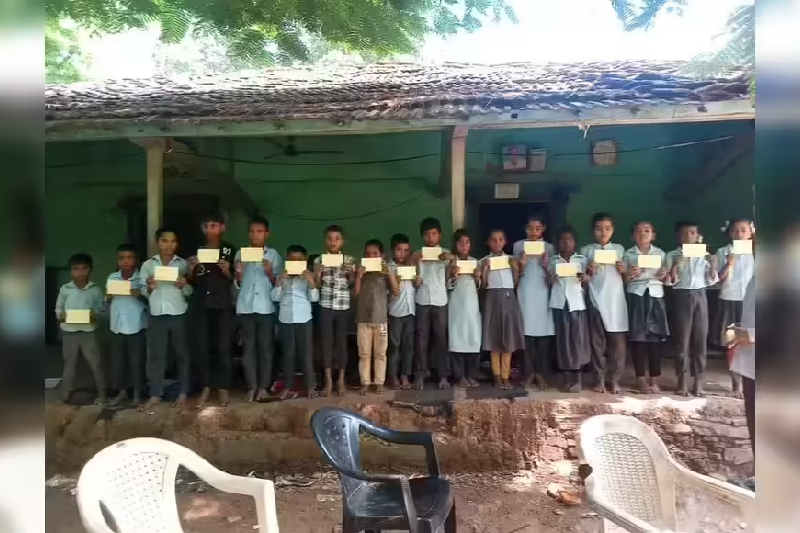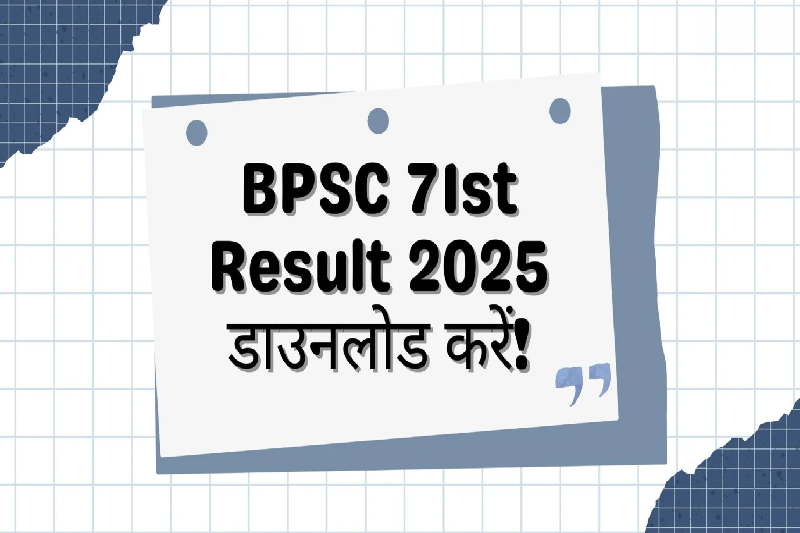
Twelve Years Without a School Building: Udaipur’s Primary Students Continue Their Struggle
In Damor Fala village of Udaipur, Rajasthan, the promise of a permanent school building for the Government Primary School has remained unfulfilled for over a decade. Established in 2013, the institution still lacks its own facility, forcing 37 students to study in the cramped verandah of a private residence where a family of four also lives.
Despite repeated assurances, construction attempts, and appeals to authorities, the children continue to learn under precarious conditions. Now, in a fresh show of determination, students have begun writing postcards to Chief Minister Bhajan Lal Sharma, urging urgent action.
A School Without a Home
The Government Primary School in Damor Fala was sanctioned in 2013 with the aim of providing local children access to basic education within their village. However, since its inception, it has been operating out of a private home. The temporary arrangement has now stretched into its twelfth year, exposing students to constant hardships.
In 2015, construction of a permanent school building finally began, raising hopes among villagers. By 2018, the structure was reportedly completed and was awaiting formal handover to the school administration. Yet, disaster struck in 2019 when the building collapsed before it could even be used.
The Collapse and Its Aftermath
The collapse of the new school building in 2019 marked a turning point in the community’s struggle. What should have been a solution became yet another hurdle. Villagers immediately petitioned the local administration and state government, demanding reconstruction. However, despite multiple requests over the years, no significant action has been taken.
Local resident Narendra Pal Damor summed up the community’s frustration: “The primary school was sanctioned in 2013, and since then, it has been functioning out of a private residence. In 2018, the school building construction was completed, and handing over to the school administration was to be done, but in 2019 the building collapsed. Since then, we have made multiple requests to the department and state government to construct the building, but no action has been taken.”
Students’ Plea Through Postcards
Tired of waiting and disappointed by administrative delays, the students themselves have taken matters into their own hands. In an unusual but heartfelt campaign, they have begun writing postcards to Chief Minister Bhajan Lal Sharma, narrating their plight and demanding a resolution.
One such postcard read: “Several complaints were made to the local administration, but the problem remained unresolved. Due to the lack of a school building, we are forced to study together on the veranda of a private residence.”
This initiative reflects both the resilience of the children and the seriousness of the situation. Their campaign will continue until their demand for a safe and functional school building is met.
Learning Under Unsafe Conditions
The current learning environment raises severe safety and comfort concerns. Teacher Kalawati Kharadi explained the daily struggles: “The school building collapsed partially, but it was in such a condition that even the parts that are there, classes cannot be conducted there as it is a safety hazard for students. There are a total of 37 students in the school, and we have to somehow manage teaching them in the verandah of a local resident irrespective of rain or cold.”
The veranda, though temporarily sheltering the children, is far from an appropriate learning space. It exposes them to weather extremes, limits classroom interaction, and undermines the quality of education. For a government primary school serving as the foundation of learning for rural children, such conditions risk long-term educational setbacks.
The Human Cost of Administrative Delays
Beyond the physical discomfort, the prolonged absence of a permanent school building symbolizes systemic neglect. Children from rural and tribal areas like Damor Fala already face barriers in accessing quality education. The lack of proper infrastructure only widens the gap between urban and rural learners.
Moreover, the issue highlights the emotional toll on both children and teachers. Students who should be focused on studies are instead compelled to campaign for basic rights, while teachers must improvise and compromise on classroom standards every day.
A Community’s Unwavering Demand
Despite repeated disappointments, the villagers of Damor Fala have not given up their demand. Parents, teachers, and students continue to press the administration for action. The campaign of writing postcards has brought fresh visibility to their struggle, turning a local issue into a matter of state attention.
The persistence of the community reflects a larger truth: education is not just about textbooks and lessons, but also about dignity, safe environments, and equal opportunities. The children of Damor Fala are determined not to be forgotten.
What Lies Ahead
The responsibility now lies with the state government to respond to the children’s call. Reconstruction of the school building must be prioritized to ensure the academic future of these 37 students and many more who will enroll in the years to come.
The plight of Damor Fala is also a reminder of the need for accountability in public infrastructure projects. Ensuring quality construction, timely handovers, and monitoring mechanisms is essential to prevent such failures in the future.
Until then, the children of Damor Fala will continue their studies in a borrowed verandah, hoping that their voices, carried on postcards to the Chief Minister, will finally bring the change they deserve.



